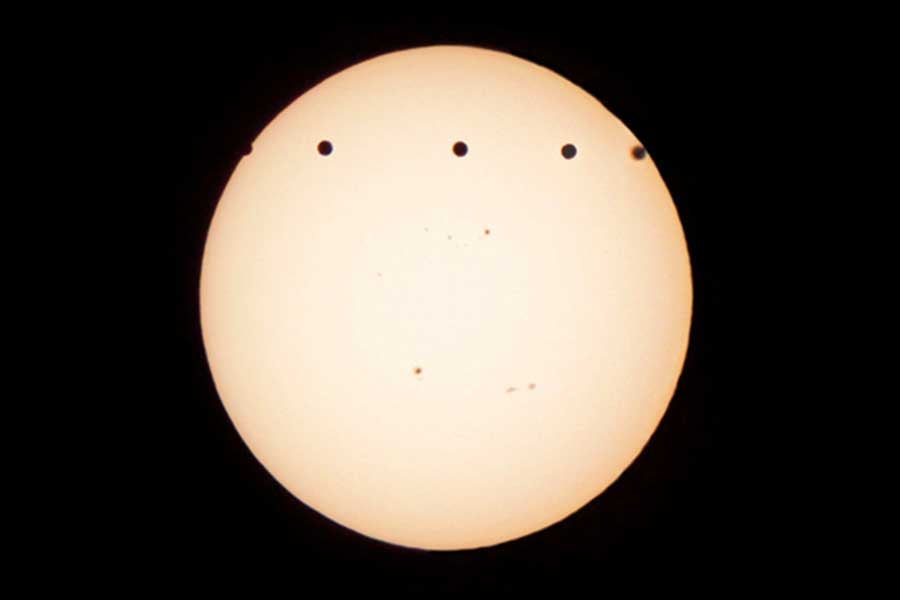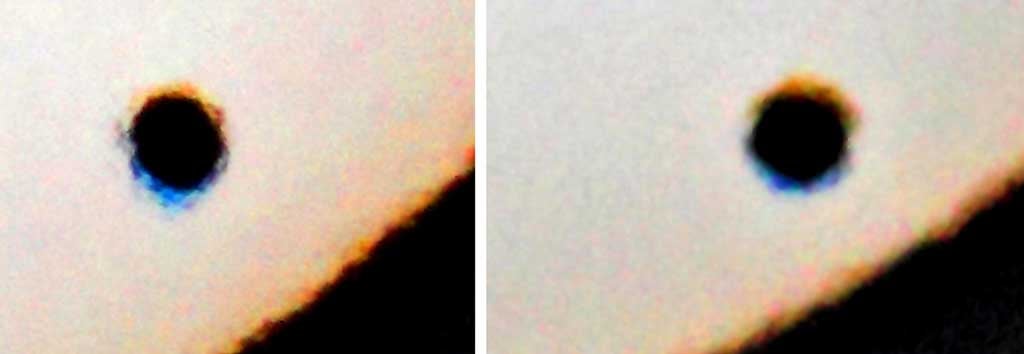The aureole of Venus
One of the most memorable moments came as Venus’ disk neared second contact, just as it completely slipped into the Sun’s disk. This is when we spied the “aureole effect,” a whisker-thin arc of white light surrounding the following limb, or “rear edge,” of Venus. It results from sunlight refracting through the planet’s dense atmosphere.
Mind, color, and form
Perhaps the most enjoyable aspect of the passage from second to third contact (when Venus started exiting the Sun’s face) was using our mind’s eye to “see” the three-dimensional clockwork motions of our solar system in action: Earth rotating as Venus revolved. We also imagined ourselves as inhabitants of a cloud-free Venus, gazing from the bright side at the monstrous Sun.
George J. Gibbs first described the phenomenon for sunspots in the September 1918 Journal of the British Astronomical Association. As the Sun neared setting April 2, 1918, he wrote, its upper limb turned blue-green while its lower limb appeared red; at the same time, the largest sunspot showed the opposite effects. In 2004, Astronomy Contributing Editor Alister Ling saw these “reverse” red and green flashes originate from Venus at sunrise during its June 8 transit.
To understand the phenomenon, imagine the “top” of Venus’ silhouette forming an artificial lower limb to the Sun at that spot. When the Sun’s upper limb turns blue-green as it experiences the normal effects of atmospheric dispersion near the horizon, its artificial lower limb (at the top of Venus) appears orange-red, and vice versa.
In concert with the dispersal of colors, Earth’s atmosphere became viciously turbulent as the Sun neared setting. For 45 minutes, we witnessed all manner of wild distortions to Venus’ silhouette. Most remarkably, the black spot erratically shape-shifted, turning into a polygon (looking like the facets cut into a black diamond), then into a blimp, and sometimes into a teardrop, among other shapes.
The Zeppelin-like form appeared most dramatic in the moments leading up to third contact and the final black-drop effect. At times, the black spot would elongate with opposing colors (red and blue) appearing to blow out of the tips in erratic puffs. The Sun’s setting limb itself became animated with moving ripples that led to rapid distortions in the black drop, before the mountain “swallowed” Venus — ending the show, but not its impact.
As always, let me know of your observations at someara@interpac.net.













